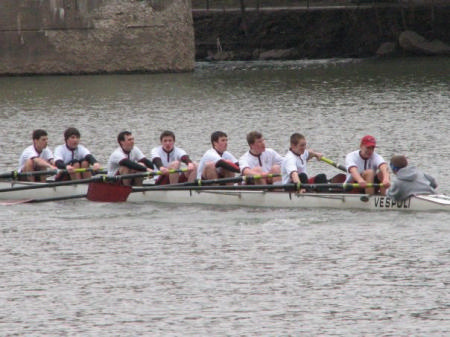As a novice rower, I was the bow of my crew. I'll tell you exactly what most novice bow rowers feel: frustrated, angry, just about hopeless for a while. That's right, I'm almost certain that novice bow rowers might be the angriest rower of the entire crew.
Let's look at the physics of the bow seat. It is literally the most narrow seat of shell. It is commonly said that the major "responsibility" of the bow (and 2-seat) is boat balance. Of course this isn't just their responsibility but any movement by these two seats will have a more drastic effect on balance than any other seat. So what are the stereotypical characteristics of a good bow? Balance, ability to mimic 7-seat (or 3-seat in a four), and smaller body size. Note that this does not in anyway mean that bow is the weakest. Remember, excluding technique, the shell is only as fast as the slowest rower.

Back to the question: why's the novice bow the most difficult rower's seat mentally? The novice boat will most commonly experience enormous amounts of problems. One of the major problems that affect bow the most is balance. As bow is in the most narrow seat, bow should be the first to contact the water on any starboard (or port if bow is port) lean. Since novice crews will generally experience a lot of heavy lean rows, bow will usually find him/herself "holding" up the boat. Holding up the boat means feathering the oar on the water during the recovery and pushing up on it so avoid further boat lean. This forces primarily bow to use energy to try to restore balance to the boat instead of into the stroke. Trust me, holding up boats is NOT FUN AT ALL. It makes things worst when the other seats in front can't see that you're holding up the boat and they think nothing is wrong. So they keep the way things are, and bow is just holding the boat all row long.
My advice: LET IT GO. Just that, if the boat leans, let it lean. Make sure to avoid feathering on the water even if you have to gunnell the oar (meaning push the oar handle as low as you can). That way, everyone will starkly feel the lean and will try to fix their personal technique. It probably won't fix the set because bow would also be having bad technique doing this, but this way everyone shares on the bad lean. Afterall, the first step in fixing a problem is identifying it. If the other rowers do not know, nothing will be fixed.
0 comments:
Post a Comment